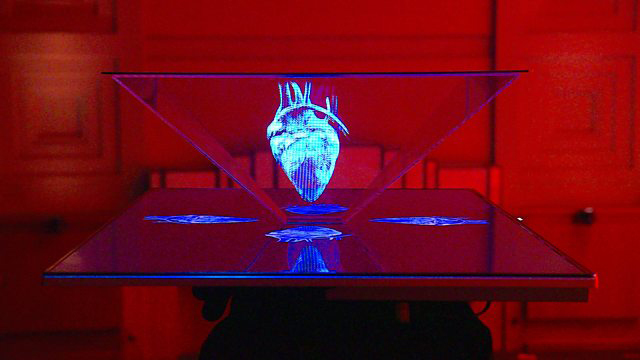BBC holographic TV experiment could put Mary Berry in your living room
It's a shame we won't see Bake Off on it though

No stranger to experimenting with technological innovations, the BBC has been exploring how future technologies could change how we watch TV by creating an experimental holographic TV.
In a post on the BBC's blog, Cyrus Saihan, Head of Digital Partnerships at the broadcaster, explained that the experiment was inspired by the small 'holographic' displays people have created using their mobile phones.
Taking the low-fi and low-cost method that's used to make these smaller displays, the team at the BBC decided to attempt a super-sized version "to see how 'holograms' might work on a larger scale, something comparable to the size of a living room TV."
To make their holographic display, Saihan said the team took a 46" TV that they already had in their office and sketched out a simple flat-topped pyramid shape, which they then asked a local plastic cutter to create for them.
Simple but effective
By placing the pyramid upside down on the TV screen, the team were able to use what they called "a modern-day version of an old Victorian theatre technique" and create the illusion of floating images within the pyramid.
Taking footage from the BBC Worldwide archives, the team worked with UK based visual effects and hologram specialist company MDH Hologram who formatted the footage so that it could be used in the experiment.
It's a simple method of creating a hologram but Saiham said it produced some "striking results." When it was shown to a few audience members reactions apparently ranged from high praise to a slightly disappointed "it was better from a distance than closer up."
Get daily insight, inspiration and deals in your inbox
Sign up for breaking news, reviews, opinion, top tech deals, and more.
To get the highest impact out of their display, the team found that certain conditions had to be met: low lighting was essential, and viewing at eye-level worked best. As well as this, only certain kinds of footage would actually work. Thanks to the physics of the light reflecting off the pyramid and the size of the TV they found that "there will always be a practical limit to the size of a display such as this."
How well this specific display worked wasn't really the point, though. Mostly the BBC team wanted to be able to explore the potential of new technologies in combination with BBC content and get some insight into audience feelings.
"The new technologies on the horizon have the potential to completely change the way that audiences experience media content in the future." said Saiham, extending an invitation to third-party innovators to get in touch via Twitter with their ideas.
Emma Boyle is TechRadar’s ex-Gaming Editor, and is now a content developer and freelance journalist. She has written for magazines and websites including T3, Stuff and The Independent. Emma currently works as a Content Developer in Edinburgh.
